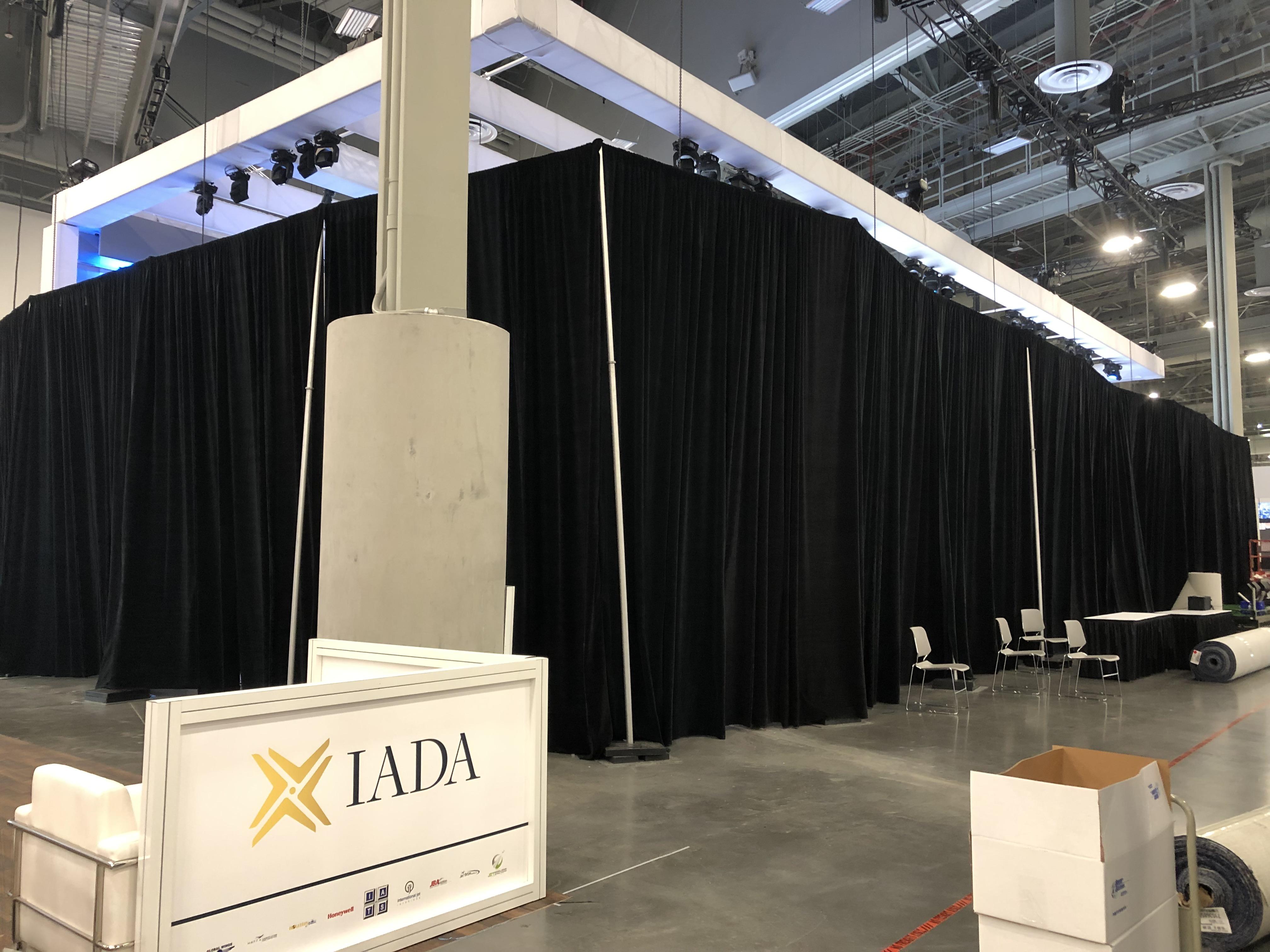
What is Honda up to at this year’s NBAA-BACE? The mystery, whatever it might be, is hidden from view by huge black curtains which–on the eve of the show–were draped around the aircraft and the automaker’s large display stand.
Although Honda surprised the aerospace world late in September by announcing the development of both an electric vertical-takeoff-and-landing (eVTOL) air taxi and a reusable small satellite launcher, no one has been expecting a new venture in the business aircraft space–until maybe now.
The company’s HondaJet light business jet, which will feed development of the eVTOL, was a long drawn-out affair beginning in the late 1990s, and that culminated in FAA certification of the HA-420 in late 2015, followed in 2016 by clearance from Europe’s European Union Aviation Safety Agency (EASA). The aircraft remains in production and in 2020, some 31 were delivered from the company’s Greensboro, North Carolina, facility.
But Honda’s ambitions may be larger, and rumors are circulating that a new, bigger cabin business jet is in the works. Engine sources indicate that Honda’s longstanding collaboration with GE Aviation, which resulted in development of the HF120 turbofan for the HondaJet, will not be extended to provide a more powerful engine for the new project. Instead, the new HondaJet partner is believed to be Rolls-Royce–which caters to the size above the HondaJet with the AE3007 for larger cabin aircraft such as Cessna’s Citation X and Embraer’s original ERJ-145 derived Lineage.
The engine-maker is also busy developing the new Pearl family based on the Advance2 core, but these are thought to be too powerful for any new concepts under study by Honda.
Alternatively, Honda may simply be about to unveil a mockup of its newly announced eVTOL which will be a will be a hybrid-electric vehicle with intercity range. A hybrid propulsion system based on a gas turbine driving a generator to augment batteries will give the piloted four-passenger vehicle a range of 400 km (250 mi.), the company says.
Honda has flown subscale models of its winged eVTOL design, which has eight lift rotors mounted on two outriggers for vertical flight and two ducted propellers for propulsion in forward flight. The company plans to conduct technology verification with prototypes in 2023, and fly a hybrid demonstration model in 2025. If the company decides to proceed with the eVTOL it intends to pursue certification in 2030.
